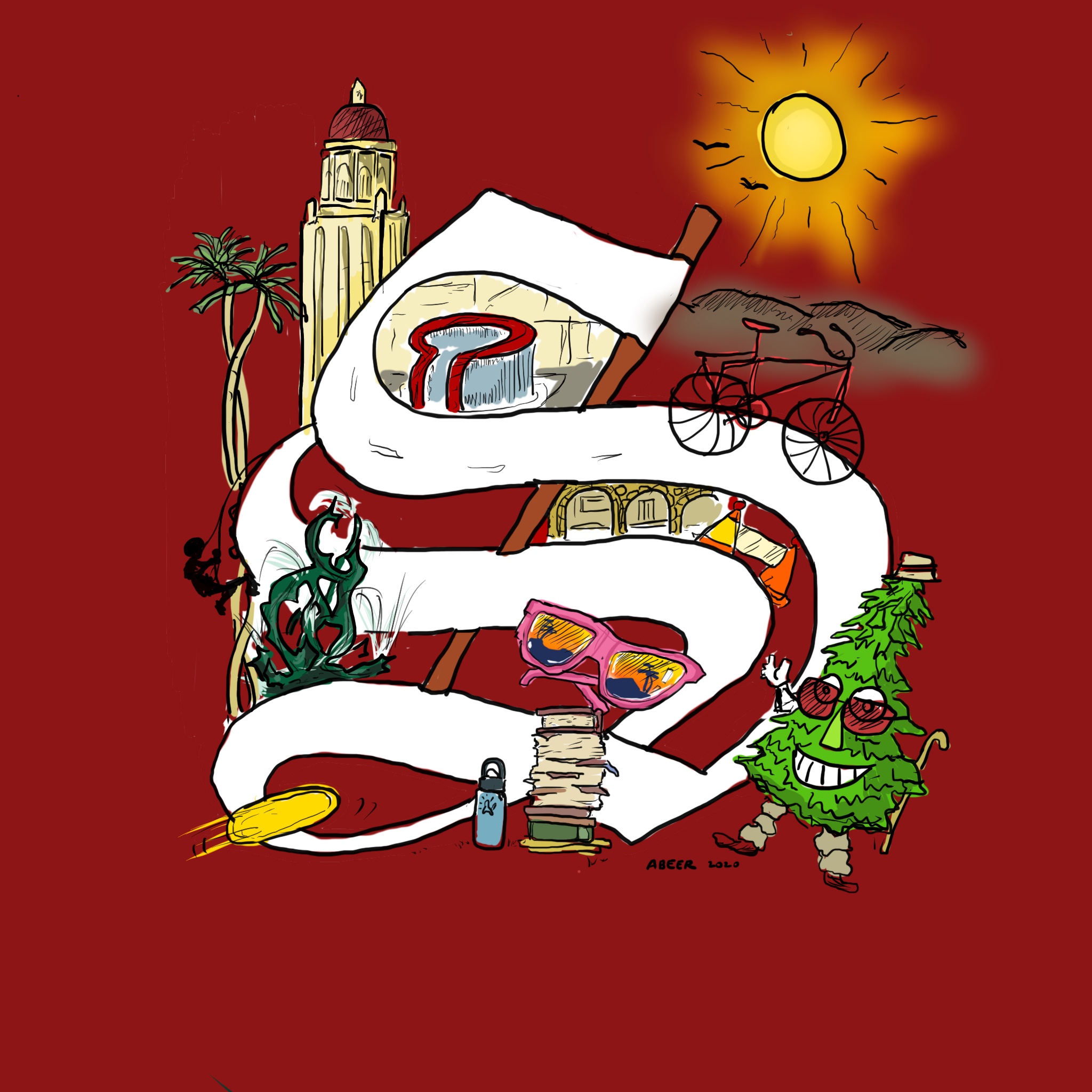
Last weekend, on Saturday afternoon, I rode my bicycle out to Trader Joe’s. It was a sunny afternoon, as we hope most will be, and I was feeling good. I’d recently gotten my first dose of the vaccine, I’d figured out my classes for spring quarter and I was re-listening to a good book. So when I came out of the store and loaded my paper bags onto my bicycle, I said hello to the person locking theirs next to me. I said hello and something about, “So you’re shopping too,” which was painfully obvious since we were right outside the store, but we’re coming out of a pandemic, and I’m a little clunky with my social interactions.
Anyway, the person was surprised. Yes, they said, but they lived in the dorms so couldn’t get much besides a few snacks. I asked some more. They go to Stanford, it turned out; and were a sophomore and English major. I tried to drop hints to show I belonged, but finally the student asked me, “So, do you work around here or something?”
Looking back, the question was inevitable. Most transfers to Stanford have heard some version of “Are you the professor/guest speaker/teacher’s assistant” at some point in our academic adventures, and this conversation wasn’t even on campus. I said no, I’m a senior at Stanford, and I major in math. Yes, I said, an undergraduate senior. The student seemed embarrassed. They apologized, said that their mother warned them that “between the ages of 17 and 30, you just can’t tell.”
I told them it was not a big deal, which it was not. I am a little older because I was in the Navy before. I said it was nice to meet them, and we said goodbye. But when I think about it, I realize that that was not the point. It’s not a question of young students looking older. I am 33, and many of my transfer peers are in their 30s. One of them, a single father, is 45. So the question, to me, is not how old do I look. The question is, what does a Stanford student look like?
Thankfully, there’s something called NSO Faces, an event where current students stand up and speak on their backgrounds and unique, diverse experiences to the incoming freshmen and transfers. But this year, no veterans or transfers were selected. There was no one to say, “Hey, before coming here I was analyzing terrorist videos in Somalia,” or “I spent 5 years teaching English in Thailand,” or in prison, or in rehab, or getting a divorce that made them turn their life around, and so on.
There were no veterans or transfers three years ago in my NSO lineup either. So that year, I and some others applied. When none of us were chosen, and were in fact, completely ignored, I wrote an article. “Transfers,” I said, “What even are they?” Those nebulous beings you’ve maybe heard mentioned somewhere, the ones who come from everywhere and nowhere, but took the scenic route to Stanford — what’s their deal? And I gently hinted that our submissions had been passed over for many years in a row.
NSO Staff emailed the transfer coordinator, said, “Hey, tell him he can apply.” I said we had, and would again, and we did, and here we are. This year, I was going to point out, not so subtly, that our submissions had been passed over by Faces staff for another consecutive year in no-one-knows-how-many. (Rumor has it since 2014.) And then I realized: I’m freaking 33. Why even bother? Let the 20-year-olds give their wisdom to the 18-year-olds, right?
But I told a friend, a 20-year-old friend, and she said no, there is something important that we (they) need to see. When you’re young, she said, you think that whatever life you build by 25 is going to be it. That you’ll be burned out, washed up, static. We need to see that there are “grown-ups” who are still reinventing themselves, still refusing to settle, still showing that it’s never too late to become what you could be.
What she said could not be truer than now. The pandemic, among the many things it has made us think more deeply about, has made us rethink age and careers, and this extends far beyond college. A friend of mine quit his uppity-rich-kid high school teaching job and is self-studying programming. When he re-joins the workforce, he’ll be like Robert De Niro in 2015’s “The Intern,” just not as suave. It is also nothing new. Alan Zorn Ph.D. ’19, a Stanford alumnus, defended his dissertation at 70.
I’m writing this article because, as we start moving back onto campus, you’re going to see us walking around. You’ll see us with our beards and our smile-wrinkles and out-of-date fashion. And maybe we won’t get to walk out of class together or sit with each other in the dining halls or attend those random little speaker events that Stanford is so known for, but I hope that at some point we’ll meet and chat and get to know each other.
Because when you’re 30 or 40, I hope you’ll have found exactly what you’re looking for, but maybe you won’t. And maybe you’ll be thinking you want to make a change. You’ll have your degrees, sure, but maybe you’ll be questioning your career or love life, and asking yourself whether it’s too late. And if you do, I hope you’ll remember us. I hope you’ll think back on that 33-year-old riding his bicycle to class or logging into Zoom to be outshone by a bunch of teenagers. And when you do, I hope you’ll sit up straight, take a deep breath, and tell yourself, “No, never.”




